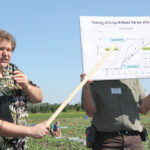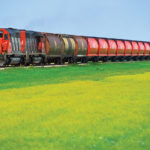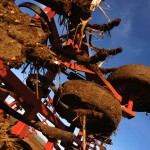
Tag Archives University of Manitoba

New technology and techniques on 4R nutrient management tour June 28
In-field nutrient measurements are just one facet that will be explored

Prairie residents tired of tent caterpillars
St. Lazare, Man., has been taken over by forest tent caterpillars, to the dismay of locals. They’re not alone
U of M receives connectivity boost
The Internet of things is set to make new inroads in agriculture

Training critical for new beekeepers to avoid disease woes
Beekeepers stress the need for industry newcomers to be trained in disease and pest management

Funding available to collaborative projects
Government aims to push agriculture to industry value of $75 billion by the year 2025

Western farmers benefit from grain-handling efficiency gains
Basis levels are closer to normal, indicating more competition and fewer system constraints, says U of M ag economist Derek Brewin

Railway costing review risks, benefits
A review was a Liberal election promise but the government hasn’t announced one despite proposed changes to the maximum revenue entitlement

U.S. study questions neonics for soybean aphid control
The effectiveness of the insecticide has diminished by the time the plants are at the stage when the insects arrive

RMs looking for a few good medical recruits as doctor offices sit empty
Faced with perpetually rotating medical staff, RMs in southwest Manitoba have started taking recruitment in their own hands

Disc tillage not the only answer to corn residue
Recent research on the effect of corn on subsequent soybean crops suggests there may be other alternatives


